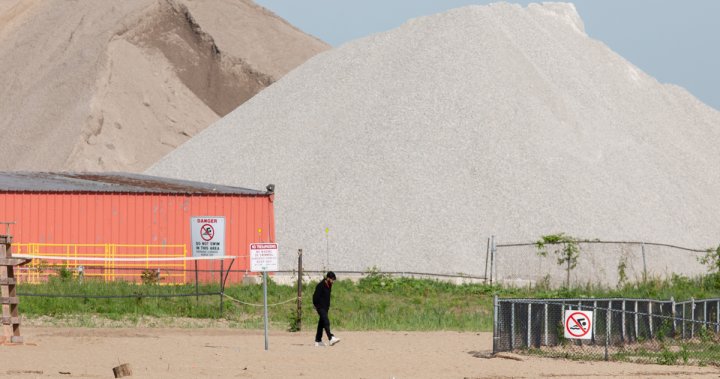As temperatures soar across southwestern Ontario, Windsor residents face a disappointing reality this summer season: the city’s only public beach remains closed for a second consecutive year, leaving many without a crucial cooling option during the current heatwave.
Sand Point Beach, nestled along the Detroit River, has been barricaded since last year due to persistent safety concerns regarding dangerous currents and underwater hazards. The continued closure comes at a particularly challenging time as Environment Canada issues heat warnings across the region, with temperatures climbing well above 30 degrees Celsius.
“Safety must always be the priority,” explained Windsor Mayor Drew Dilkens in a statement addressing frustrated residents. “While we understand the disappointment, especially during extreme heat events, we cannot in good conscience open a beach where underwater conditions pose significant risks to swimmers.”
The city’s decision follows recommendations from water safety experts who identified multiple hazards including strong river currents, unpredictable undertows, and underwater debris that create dangerous swimming conditions. These concerns are amplified by the beach’s location at the mouth of Little River, where water flow patterns can change rapidly.
For Windsor’s approximately 230,000 residents, the closure eliminates the only public natural swimming area within city limits. This leaves families, particularly those without air conditioning or private pools, searching for alternatives to beat the heat.
“It’s incredibly difficult for families like mine,” said local resident Maria Santos, a mother of three young children. “We don’t have central air, and with temperatures this high, we used to rely on the beach. Now we’re traveling nearly an hour to reach the nearest public swimming area.”
City officials have attempted to mitigate the impact by extending hours at public splash pads and community pools. The Adventure Bay Family Water Park has also introduced discounted admission during extreme heat events, though many residents argue these indoor facilities cannot replace the experience of a natural beach setting.
The closure represents a broader challenge for Windsor, which despite being surrounded by water bodies, has limited public access to beaches. While neighbouring communities like Leamington and Essex have maintained accessible waterfront areas, Windsor’s unique position along the heavily industrialized Detroit River presents ongoing environmental and safety challenges.
According to data from Public Health Ontario, heat-related emergency room visits typically increase by 16-22% during extreme temperature events, with vulnerable populations including seniors and young children at highest risk. This public health dimension adds urgency to the debate over water access.
The city council has allocated $1.2 million for a comprehensive shoreline study to determine potential remediation efforts that could eventually make Sand Point Beach safe for public use. However, engineering assessments indicate any solution would require significant infrastructure investment and environmental permits that would take years to implement.
“We’re exploring every option,” Councillor Jo-Anne Gignac told local media. “But the reality is that the Detroit River’s current patterns and our industrial history create complex challenges that cannot be solved quickly or inexpensively.”
Some environmental advocates have suggested the beach closure highlights the need for greater investment in urban green spaces and cooling infrastructure across Windsor. The city’s tree canopy, at approximately 19%, falls below the national average of 27% for urban centers, contributing to higher urban heat island effects.
As Windsor residents face another summer without their only public beach, a fundamental question emerges for this border city and others facing similar climate challenges: how can urban communities balance immediate public access needs with long-term safety considerations in an era of increasingly extreme weather events?











